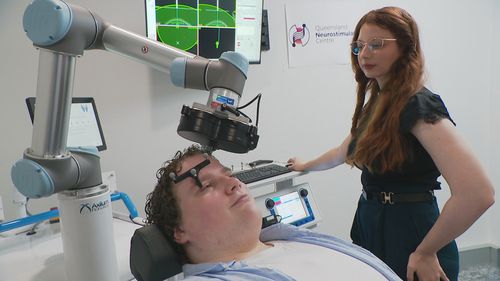People suffering from depression are benefitting from a more targeted version of an existing brain stimulation treatment.
Transcranial Magnetic Stimulation (TMS) delivers magnetic pulses to a patient’s brain through a robotic coil placed on the exterior of the scalp. The pulses stimulate nerve cells involved in a person’s mood.
Experts say the treatment provides another option for medication-resistant depression patients like Beau Jones.

“Depression at the worst of times is lethal and at the best of times is awful,” Jones said.
Jones has been suffering from depression for 15 years and underwent TMS as an alternative path to treatment after his medication stopped working.
“It’s definitely improved my mental health,” he said.
“The situations I find myself in are not as intense or dark as they had previously been.”
In standard TMS treatments, all patients receive magnetic pulses to the same area, but now the University of Melbourne and Queensland Neurostimulation Centre are developing a more targeted approach.
Researchers like Dr Robin Cash from the University of Melbourne use an MRI scan to map specific areas in each patient’s brain that are triggering the depression.
The TMS is then sent to that spot with a millimetre of allowance.

“What we’re doing is a precise targeted approach that’s based on a brain scan,” Cash said.
“Our initial data suggests up to 65 per cent of individuals respond to this personalised and targeted therapy.”
Luca Cocchi from the Queensland Neurostimulation Centre explained that the robotic coil sends up-to-date information to the machine.
“We will have a robot that will use information from the brain of the participant who will very precisely and consistently deliver the stimulation.”

